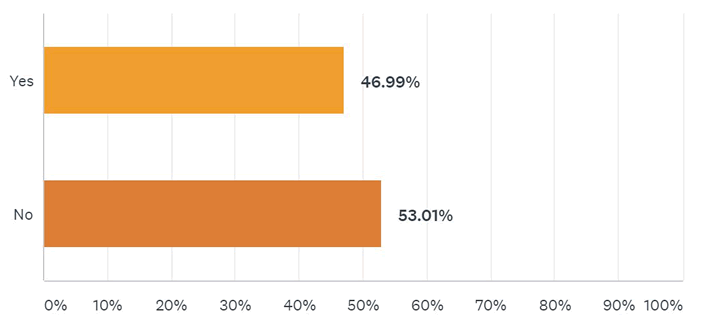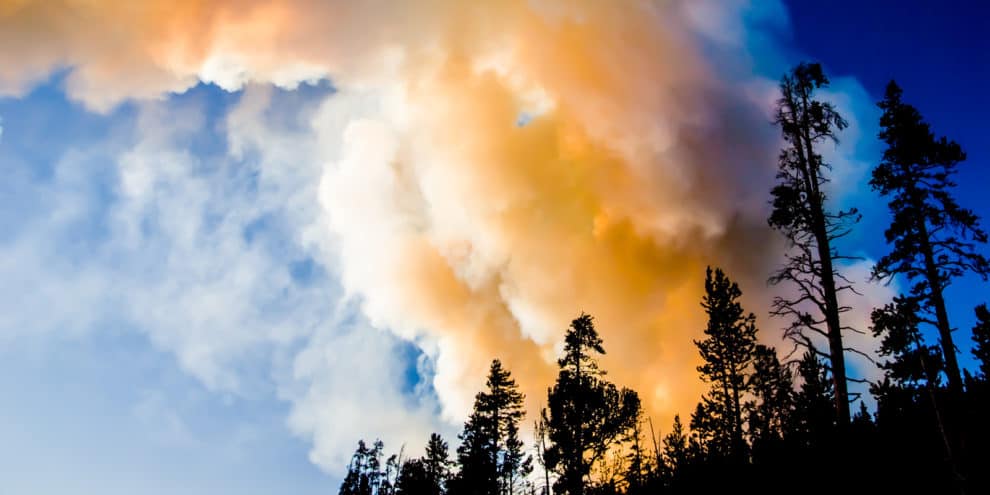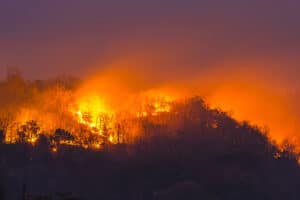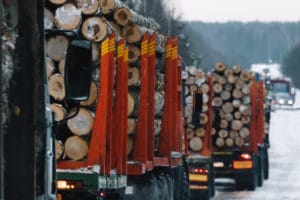The November LANDTHINK Pulse revealed that 53.01% of respondents believe that reducing fuels by aggressively logging and thinning forests will not result in fewer wildfires. The American West has suffered an onslaught of devastating wildfires in 2017. The raging fires have burned out of control all across the region, with California, Oregon and Montana suffering the most devastation. California is currently experiencing an unprecedented wildfire season, and it seems there’s just no end in sight.
This year is shaping up to be one of the costliest, deadliest and destructive seasons on record. According to the National Interagency Fire Center, 9,513,698 acres of land have been consumed by flames nationwide in 2017, since the start of the year. The fires have resulted in loss of life and tremendous mental anguish for residents forced to flee. Massive swaths of America have been reduced to blackened earth, as the infernos have swallowed up homes, wineries, sprawling ranches and cannabis farms. Vehicles, farm equipment, crops and timberland have been lost. Large numbers of horses, cows, pigs, and other livestock have been killed or displaced.
The Thomas Fire, which is the largest of the blazes currently burning in California, is set to become the largest wildfire in the state’s modern history. It has already grown into the first “megafire” in recorded California history in the month of December. According to the U.S. Forest Service, a fire becomes a “megafire” when it burns more than 100,000 acres. These megafires have not only burnt land and homes, but also the budget, and they’ve sparked a lot of controversy among the government, forestry experts, environmentalists and conservationists.
Scientists, environmentalists, and conservationists tend to agree with the majority of our audience (53.01%) – that excessive logging and thinning of forests will not prevent wildfires. Their argument is that fire is a naturally occurring thing, and essential to maintain ecologically healthy forests and is even necessary for coniferous forests to reproduce. Some studies conclude that the logging/thinning practices can paradoxically pose a greater risk of large wildfires. This is due to what’s left behind after logging activity; the dry brush, stumps, limbs and tree tops increase the surface fuels. Many forestry experts say the lack of a forest canopy contributes to dry soil conditions and even promote a hotter-burning, long duration blaze.
The November Pulse posed the following question to our LANDTHINK audience: Do you think excessive logging & thinning of forests helps to prevent wildfires?
The results of our informal online survey clearly indicated that excessive logging activity as a means of wildfire prevention is a divided issue among our audience. A strong 53.01% of respondents answered “NO”, indicating they DO NOT think excessive logging and thinning of forests will help to prevent wildfires. This was followed very closely by 46.99% who thought that’s not the case and responded “YES”, logging and thinning of forests DOES help in the prevention of wildfires.
Proponents of increased logging and thinning have some valid arguments. The U.S Forest Service, timber industry, GOP leaders, and 46.99% of our LANDTHINK audience think that excessive logging, thinning, and clear-cutting will help prevent wildfires in old-growth forests, where much of the standing timber is beetle-infested, due to drought and fire, and is dead or dying. They believe that reducing excessive fuel load (forest density) will result in fewer wildfires, and protect communities and forests from the devastation of a massive wildfire. Some believe it also improves the wildlife habitat, promotes a healthy forest ecosystem, and provides a source of renewable biomass energy.
Last month, House Republicans passed a bill to allow faster approval for logging and other actions to reduce the risk of fire in national forests. House Speaker Paul Ryan said the bill was needed to protect the nation’s forests “from the kind of devastation that California experienced.” He went on to say the GOP bill ”will help us stop forest fires before they occur”.
The record-breaking fire season of large, long duration fires have prompted state and federal lawmakers to take a good hard look at what can be done to not only reduce the number of wildfires but also better prepare financially for major wildfires. Last September, U.S. Secretary of Agriculture Sonny Perdue announced that the cost of fighting wildfires- from Florida to Washington- exceeded $2 billion for fiscal year 2017, breaking the previous record of $1.7 billion spent in 2015. In addition, states have also spent millions battling the blazes.
Perdue, with the support of many governors of the Western states, are lobbying Congress “to fix the fire-borrowing problem once and for all.” “Fire Borrowing” is a budgetary practice that comes into play when appropriated funds for fire suppression fall short, and officials borrow from programs dedicated to wildfire prevention and healthy forests.
Here are the final results:

- 53.01% said NO, excessive logging & thinning of forests DOES NOT help prevent wildfires
- 46.99% said YES, excessive logging & thinning of forests DOES help prevent wildfires
Thank you to everyone who participated and shared the Pulse with friends and connections in the land industry. LANDTHINK would like to extend a big thank thank you to LANDFLIP for sponsoring the November Pulse. LANDFLIP helps buyers easily find land and provides land sellers with an easy to use platform for marketing and advertising land for sale, land auctions, land for lease, and land for sale by owner.
Be the first business to sponsor the Pulse in the New Year! LANDTHINK is seeking sponsors for the January Pulse and months thereafter. Sponsorship of the Pulse is a great way to ensure your brokerage is the first one buyers and sellers recognize and call when they have a need to buy or sell property. Leveraging our entire network of web and social media sites is a great way get to step up your marketing game in 2018. Pulse sponsorships are offered on a first come first serve basis and are subject to certain limitations. If your business would be interested in sponsoring next month’s January Pulse question, please contact us soon.
Do you have a suggestion for next month’s Pulse question? Submit your question and we might choose yours!
In the spirit of the holidays, we thought this month’s Pulse question should be lighthearted and fun. We want to know what you think about our December Pulse question, sponsored by LOTFLIP: Which is your favorite variety of Christmas tree? Answer now.
This content may not be used or reproduced in any manner whatsoever, in part or in whole, without written permission of LANDTHINK. Use of this content without permission is a violation of federal copyright law. The articles, posts, comments, opinions and information provided by LANDTHINK are for informational and research purposes only and DOES NOT substitute or coincide with the advice of an attorney, accountant, real estate broker or any other licensed real estate professional. LANDTHINK strongly advises visitors and readers to seek their own professional guidance and advice related to buying, investing in or selling real estate.









Add Comment